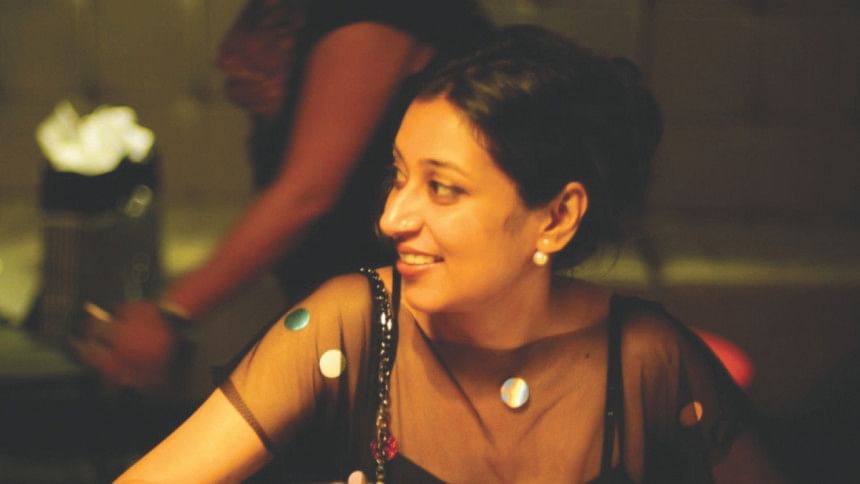"We must tell our story to the rest of the world"

Nawshin Khair is a charismatic creative designer, cultural connector, social entrepreneur and activist whose heart remains with the world of design and art. Nawshin is active with many concerns of Bengal Foundation, founded by her father Abul Khair. She headed operations of Bengal Music from 2007 till 2009, and currently leads the operations of ICE Media Ltd and is managing director of art gallery Bengal Art Lounge. She is an exhibition curator and fashion designer, leading her own label Paera -- and the creative wing of local fair trade brand Aranya, which focuses on revival and conservation of natural dyes, local handlooms and handicrafts of Bangladesh.
Nawshin is the country coordinator and member of the global advisory board for Fashion Revolution and founder of Trace My Fashion initiative. This correspondent caught up with her for a conversation:
What is the best part of being a fashion designer?
Nawshin Khair: Fashion design allows me to visualise something beautiful, then working with artisans from my country to realise it. I like my designs and creations to have meaning; the materials I choose are eco-friendly; surface designs often derive from traditional methods and colours are extracted from natural dyes.
What inspires you to create new designs?
Nawshin: I draw inspiration from Bangladesh's heritage, incorporating thematic motifs, colours, and maintain use of traditional handlooms. My focus is to fuse the traditional with the contemporary. I am inspired by the artisans of nakshi kantha, jamdani, jute and the architecture around Bangladesh.
Tell us about your experiences at International Fashion Showcase (IFS) 2016 in London.
Nawshin: I was invited to visit IFS 2016 by the Bangladesh wing of British Council (BC). IFS is a collaboration between BC and LCF, which is hosted during the London Fashion Week. I believe that Bangladesh has come a long way and we are ready to be part of the international designer network. Bangladesh is leading in manufacturing garments for the international market. With the right opportunity and exposure, designers from Bangladesh can also come out from the local into the international market.
Tell us about your association with British Council?
Nawshin: I participated in a workshop hosted by BC in Dhaka with other policymakers, designers, and international delegates to plan a way forward for the fashion industry in Bangladesh. Since, we have been trying to work on a grant to create a platform for emerging fashion designers.
How do see these connections helping the fashion industry in Bangladesh?
Nawshin: Bangladesh has a great opportunity to thrive in fashion design, couture wear, and eco-friendly fashion. We have exquisite artisanal support and outstanding handloom fabrics. We need to invest in innovation and efforts to create links and knowledge transfer for the designers to create contemporary lines. This will go a long way for the designers of my country.
How can fashion designers promote heritage?
Nawshin: With time, designers must reinvent and constantly innovate to appeal to their customers. We must find a balance between the traditional and the contemporary. Handlooms and handicrafts are in dire straits and we need to reintroduce the beauty of the crafts to local citizens and create a place for them in global settings. We must tell our story to the rest of the world.

 For all latest news, follow The Daily Star's Google News channel.
For all latest news, follow The Daily Star's Google News channel. 



Comments